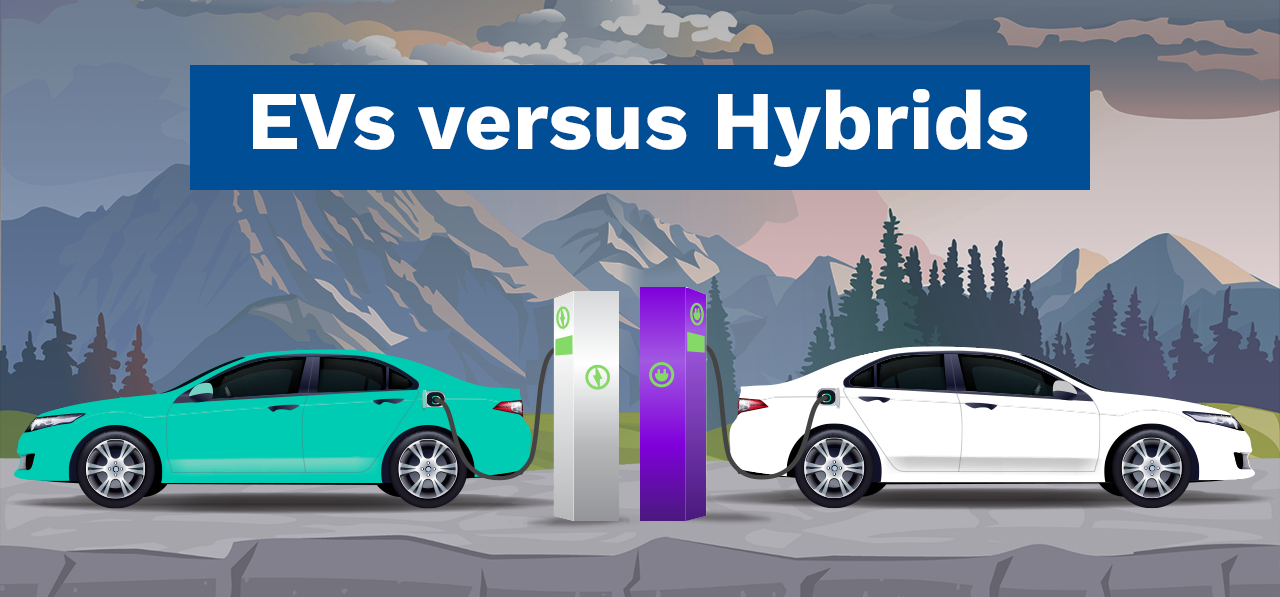Ready to make an electric change in your life? Here’s how to do it
With electric vehicle (EV) sales on the rise, more and more people are considering the purchase of an electric or hybrid vehicle. Australia has seen a remarkable 120% increase in sales over the last year, according to the latest Electric Vehicle Council report. As attention about climate change and environmental sustainability continues to grow, transitioning to electric or hybrid vehicles presents an appealing option for reducing carbon emissions and dependence on fossil fuels. It can also be a lucrative transition, with many government subsidies available and an excellent rate of return on investment if reselling through Pickles. And with Australia’s charging network expanding, owning an EV is becoming both a viable and attractive choice for mums, dads and commuters alike.
Navigating the future of sustainable transportation
For newcomers to the realm of electric vehicles, sifting through the array of options might initially feel overwhelming, but Pickles is here to make things easier. We’ve laid out the essentials for purchasing an electric or hybrid vehicle, empowering you to make well-informed decisions. Before delving into the fundamentals of buying either type of vehicle, it’s important to grasp the distinctions between the two.

Electric vehicles (EVs)
Electric vehicles run entirely on electric power stored in a battery. They do not have an internal combustion engine, meaning they produce zero tailpipe emissions. EVs are charged by plugging them into an electric power source, such as a charging station at home or a public charging station.
Hybrid vehicles
Hybrid vehicles combine an internal combustion engine with an electric motor and a battery. There are different types of hybrid vehicles, including mild hybrids, full hybrids, and plug-in hybrids. Mild hybrids assist the internal combustion engine with the electric motor to improve fuel efficiency, while full hybrids can operate on electric power alone at low speeds. Plug-in hybrids have larger batteries that can be charged through both regenerative braking and by plugging into an electric power source, offering the option for all-electric driving for a limited range.
Factors to consider when buying
When considering the purchase of an electric or hybrid vehicle, several factors should be weighed up.
Range: Range refers to how far an electric vehicle can travel on a single charge. You need to think about your daily grind and the availability of charging infrastructure in your area. While EV ranges have been steadily increasing, you need to ensure that the range of your car meets your daily commuting needs.
Charging infrastructure: Access to charging infrastructure can make or break the decision, so it’s essential to assess the availability of charging stations in your local area, as well as along the routes you frequently travel. Also, make sure you can accommodate a charging station at home, whether through a dedicated charger or a standard electrical outlet.
Cost: The cost of electric and hybrid vehicles can vary significantly depending on factors such as brand, model, and features, but what we are seeing across the board is that we’re amid a surge in demand for electric vehicles. In response, manufacturers are accelerating production and expanding the variety of electric vehicles available to accommodate diverse preferences and budgets. While electric vehicles tend to have a higher upfront cost than their internal combustion counterparts, they often have lower operating costs due to savings on fuel and maintenance. For more information on the cost of EVs, check out Pickles’ guide on the road to affordable electric cars.
Incentives and rebates: The Fringe Benefits Tax exemption for eligible low or zero-emissions vehicles, implemented on July 1, 2022, stands out among various EV incentives. This policy, applicable nationwide, saves buyers thousands when salary sacrificing an electric vehicle. Limited to vehicles priced below the luxury car tax threshold of $89,332 for the financial year 2023/24, it can potentially notably benefit a large population bracket and thereby promote wider adoption of environmentally friendly transportation options.
Environmental impact: One of the primary reasons many people choose an electric or hybrid vehicle is to reduce their environmental footprint. When buying, consider the emissions associated with charging an electric vehicle in your area compared to the emissions from conventional vehicles, and look at the environmental impact of manufacturing and disposing of batteries used in electric vehicles.
The big decision
Ultimately, the decision to purchase an electric or hybrid vehicle boils down to individual preferences, lifestyle, and priorities. While electric vehicles offer zero-emission driving and reduced reliance on fossil fuels, practicality varies depending on factors such as range, charging infrastructure, and upfront cost.
Moreover, with an increasing number of EVs hitting the market, Pickles receives and offers a wide variety of used models that offer an affordable alternative to a new EV/hybrid purchase. Whether you’re a newcomer looking to enter the market with options starting from $30,000, seeking mid-range choices in the $40,000s and $50,000s, or aiming for premium electric vehicles priced at $60,000 and above, there’s something for everyone.
As the automotive industry continues to expand its offerings of electric and hybrid vehicles, the transition to sustainable transportation is becoming increasingly accessible. By educating yourself and exploring your options, you too can join the movement towards a cleaner, greener future on the road.
Stay ahead of the kerb, shop Pickles' full range of quality, used electric and hybrid vehicles now!
10 May